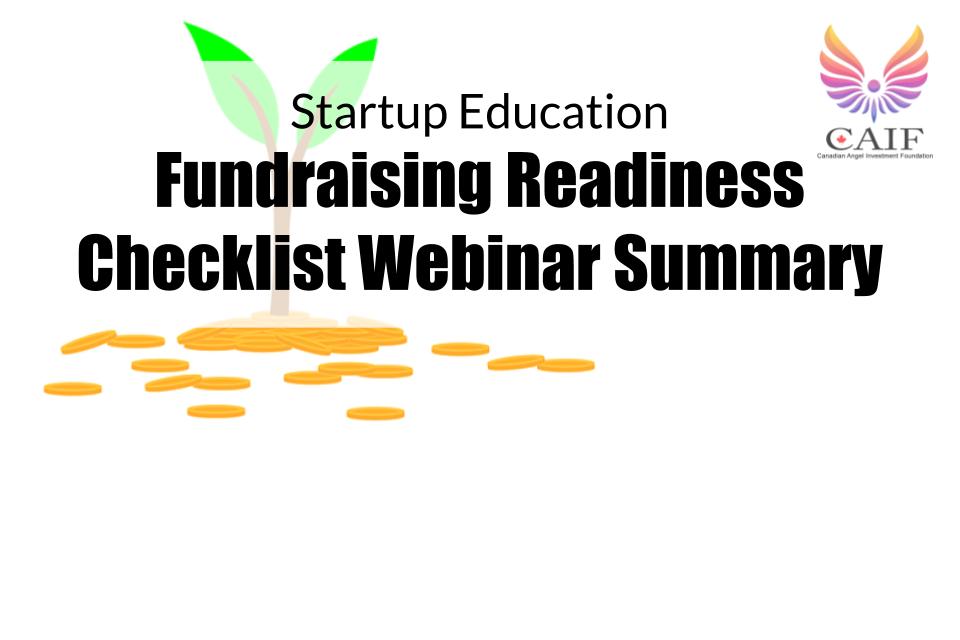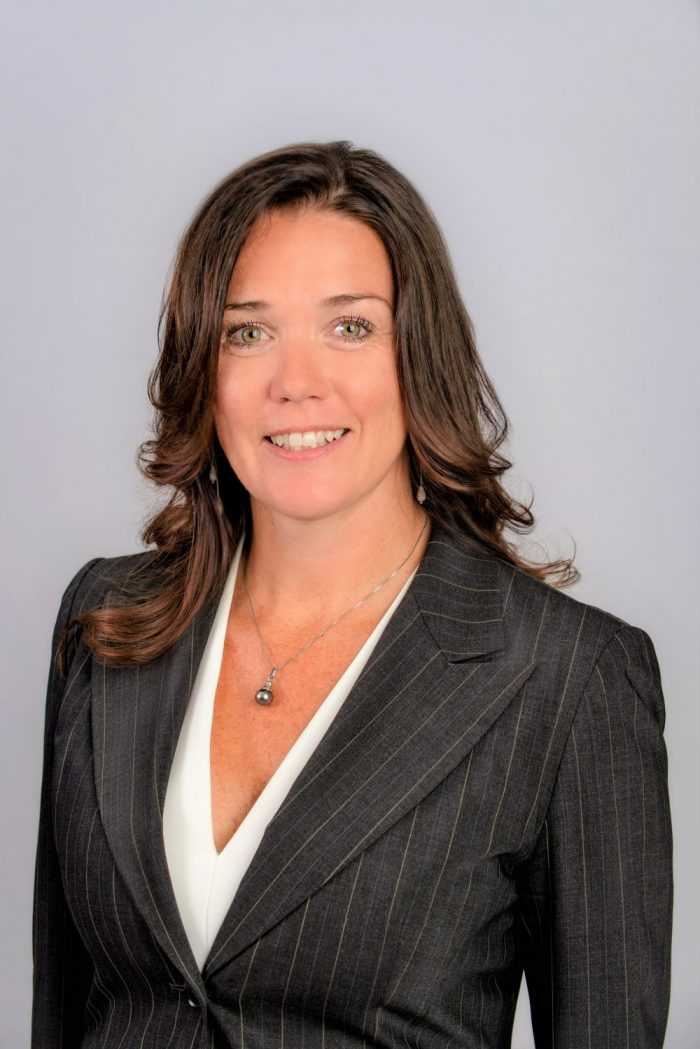
Summary of Fundraising Readiness Q&A
Is my business prepared to start fundraising once it has been incorporated?
Once your business has been incorporated, there are a few things to consider and prepare before fundraising.
- The share structure – when you registered online, there are default structures that are included in the corporation, however they do not split your shares into different classes. Ensure that your company can issue an unlimited amount of shares as needed for fundraising.
- Bylaws – These are a set of rules that govern your company and should be determined.
- Minute book – A collection of documents that depicts the executive decision making that investors will want to examine.
TIP: Since these are very time-consuming administrative tasks, if you are not confident in completing all these tasks by yourself, it is suggested to contact a lawyer.
What is a share capitalization table and what types of share options are there?
- The capitalization table is one of the earliest documents that any company creates and often times entrepreneurs don’t realize they’re creating one because it functions like a share register when the company first registers
- As items become more complicated, business owners often create an excel sheet table that summarizes who has invested in their company, a list of their rights, what prices they’ve entered into the company, and their overall interests. This current account register provides more depth than the share register and developed with accountants or lawyers together. This is a crucial document to have when fundraising because investors are interested in understanding who is currently in company, and what shares are available for them.
- Common Shares are the main class of shares where investors are interested in owning a portion of the corporation, share in the profit of the company, and vote on the main issues in the company
- Preferred shares are a special class of shares that is more limited in rights but have the advantage of guaranteeing some return
- Raising share price over time can be demonstrated through the capitalization table and shows the progress and value of the company
Once the incorporation, bylaws, and share register are completed, what else needs to be done in order to be investor ready?
- Investors will look at the business as a whole so they’ll want to check into function of company, major corporation agreements and contracts (Ex. Who are your employees, what is their expertise, how many hours are designated to employees). Often when you’re startup, you cant afford to hire CTO, so they’ll look at terms (if there’s share/stock options you’re giving away)
- Will take a broader look at these agreements and how they impact your business such as licensing and services agreements, how you protect your intellectual property
- Business perspective: sales pipeline, forecast
- To get an idea if it’s someplace safe to invest money
What is a term sheet and what gets captured in it?
- Term sheet is a document that contains the basic elements about investment such as who is involved, what is the valuation, how is investment going to be paid, what are the assets involved, price of investment, and a time frame
- If you have dealt with investors before, you may not necessarily use the same term sheet as it depends on the investors you are seeking
- A term sheet is a non-binding document therefore one is not legally bound to the term sheet, however it is usually a basis for documents that are legally binding (such as shareholders agreements, amendments, share subscription, convertible notes, and safes)
- Term sheet is an easy way to negotiate the terms with an investor (essentially valuation)
- In general, if you are aiming to do many rounds of funding, it is recommended to use different term sheets for different sets of ppl since your business is constantly changing
Is crowd funding a viable option to raise funds and what are the things one should consider when crowd funding?
- Crowd funding are platforms created for the dedicated purpose of reaching out beyond your initial circle of people, and there are classified styles of businesses
- For startups, there are platforms to present your opportunity to a prime audience who are interested in investing. Tap existing networks of angel investors.
- On crowdfunding platforms, there are multiple things you can do:
- Propose to raise equity – when you offer equity through a crowdfunding platform, you are at a certain level of development (most likely have a story as a business and have a trajectory for growth)
- In Canada, there are specific crowdfunding rules. For instance, some firms register to raise more funds. You can raise up to $1500 without verification by a crowd funding platform. Alternatively, you can raise $5000 when verified by a registered crowdfunding business.
- *Talk to a lawyer to determine which regulations to use.
- Offer memorandum – friends/family or accredited investors can provide financing without having to put together an offer memorandum, however if you don’t have this option, another exemption to an offer memorandum is to use a crowd funding platform
- Always consult with a lawyer when raising funds outside your narrow circle.
Please tell us more about the pro forma statement, the versions for different levels of funding, including the highest that you’ve seen, and how ROI is stated.
- Pro forma statements reflect what your financial statements look like for the company at the time of investment
- This will be around a time when you are preparing financials for accounting purposes as well so the preparation of the term sheet will be up to date. This depends on the stage of funding
- ROI can be calculated separately
In terms of the ROI, would you include the social ROI (Impact funding for people, planet, profit) in the pro forma statement?
- Yes, especially if your business is social related. You want to demonstrate to investors that there is a market for it and that it is worth investing in
- If you can put in the triple bottom line, definitely do it
- Especially during these times, people are investing more in the things that matter to them (what the aggregate return is; not the dollar return)
Is there an order or hierarchy to classify funding beyond friends and family? (Seed funding, round A, B, C…Z)
- Natural order of funding depends on the nature of the business and the levels of investment needed
- Typically when starting from scratch, and not having a sufficient story or reliable history of development, you cannot merely reach out to an accredited investor and ask for money.
- When entrepreneurs have ideas, they tend to reach out in the immediate circles they know (friends/family). If the idea is sophisticated and you happen to have great contacts, you can consider going beyond friends/family to get a higher level of funding
- Generally start with friends and family and gage their level of support. You can then build towards an angel investor round, and finally a venture capital round
- There are no rules to this but there are laws of nature that apply to this evolution of business
Question addressed to Mohamed: Given your background in the blockchain field, you are aware that many blockchain projects are hard to make money on except for ICO. Do you see any shot that they can raise equity funding?
- To date, it’s difficult to raise money in ICO.
- There has been an upward trend (2017-18) in terms of raising money for ICOs
- From technology perspective, look into making it easy for early stage founders to raise money because these kinds of technology and tools such as ICOs can bring founders and investors together
In terms of documents, from a founder’s perspective, what important elements should they need pay attention to?
- There will be a lot of going back and forth between the founder and lawyer concerning valuation (common interest for most people)
- Other things include:
- Preemptive Rights – rights for investors to invest in the next round and possibly have the opportunity to invest in the next round first on the same terms as future investors
- Anti-dilution clauses – future calculation of equity includes proportion of adjustment of existing shares
- Consider the type of investor you’re working with (Are they easy to work with? – You will be developing a long-term relationship with them)
Presenter

Christine L. Holmes, LL.B, J.D.
CEO and Founder of LawyersInHouse.com
Christine is the CEO and Founder of LawyersInHouse.com (“LIHDC”), a virtual law firm comprised solely of former in-house counsel. LIHDC focuses on exceptional client service and provides companies with practical, business-friendly advice. Our goal is to help you build your company by learning your specific needs and providing you with the tools to protect your business without stifling its growth. LIHDC is a full service firm with lawyers experienced in corporate, employment, IT, marketing/sales, real estate, litigation, compliance, privacy and trademark/IP services. LIHDC has lawyers licensed to practice throughout Canada, England, Wales, the EU and USA. We offer start-up packages for specific needs, subscription services, General Counsel services or ad hoc hourly assistance, depending on your requirements. Prior to founding LIHDC, Christine held in-house positions at Cineplex Entertainment and PepsiCo.
Other Posts
Transcript For SPV Investing
Chris: So you can see the question here. Leading companies in which of the following industries groups raise the most […]
Summary For SPV Investing
Part I: SPV Investing good for startups and investor by Jonathan Ip What is SPV Investing? Special purpose vehicle, also […]
Good Startup Scorecard
What elements should the scorecard involve for evaluating startups? 1. Team (20 Points): a) Founder’s passion and knowledge b) Appropriately […]
Introduction To Angel Investing Summary
Part I: How to identify good startups (Presented by John Hamblin) What should you know before investing? Understanding the […]
5 Ways to Gain Trust Online
Use Video Use of a multi sensory communication is critical online. The trend to video is not new or groundbreaking […]
7 Factors Affecting Valuations
1. Stage of your Business whether it is in an early-growth or matured stage 2. Business model must make sense […]
Hiring Part-Time CXOs 101 Summary
PART 1 – Fractional CTO (Presented by Jonathan Foo, TMQ Consultants) What does a startup CTO do? Responsible for the […]
Top 5 Pitching Techniques
Tip #1: Understand your target audience Tip #2: Start your pitch with a bold statement Tip #3: Your body language leaves the […]
